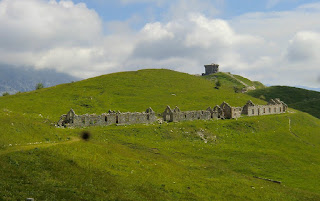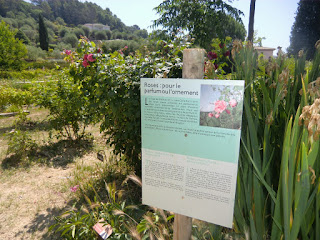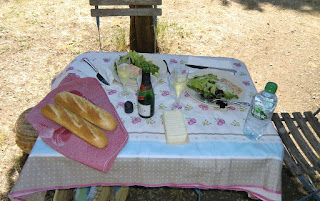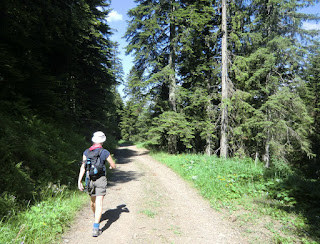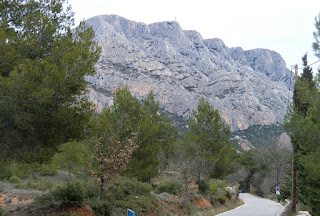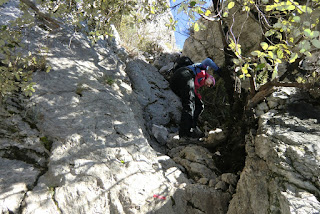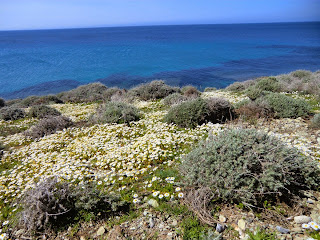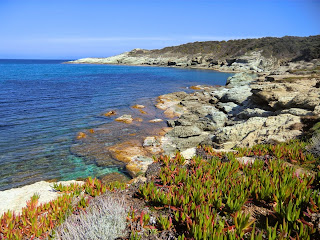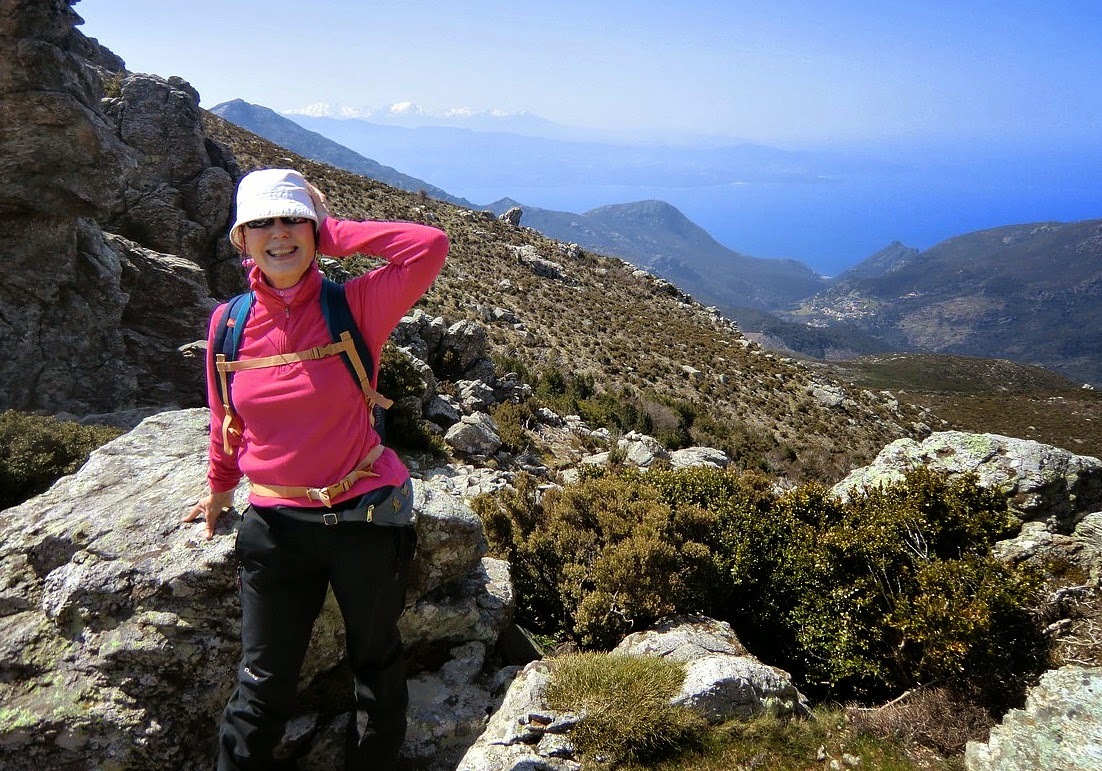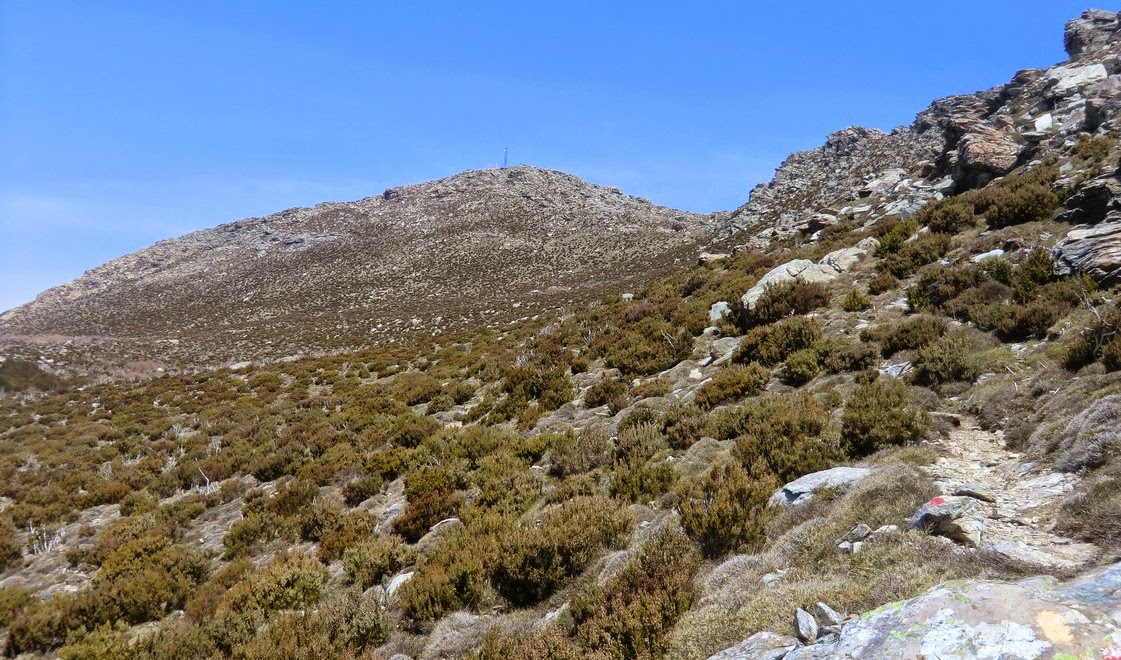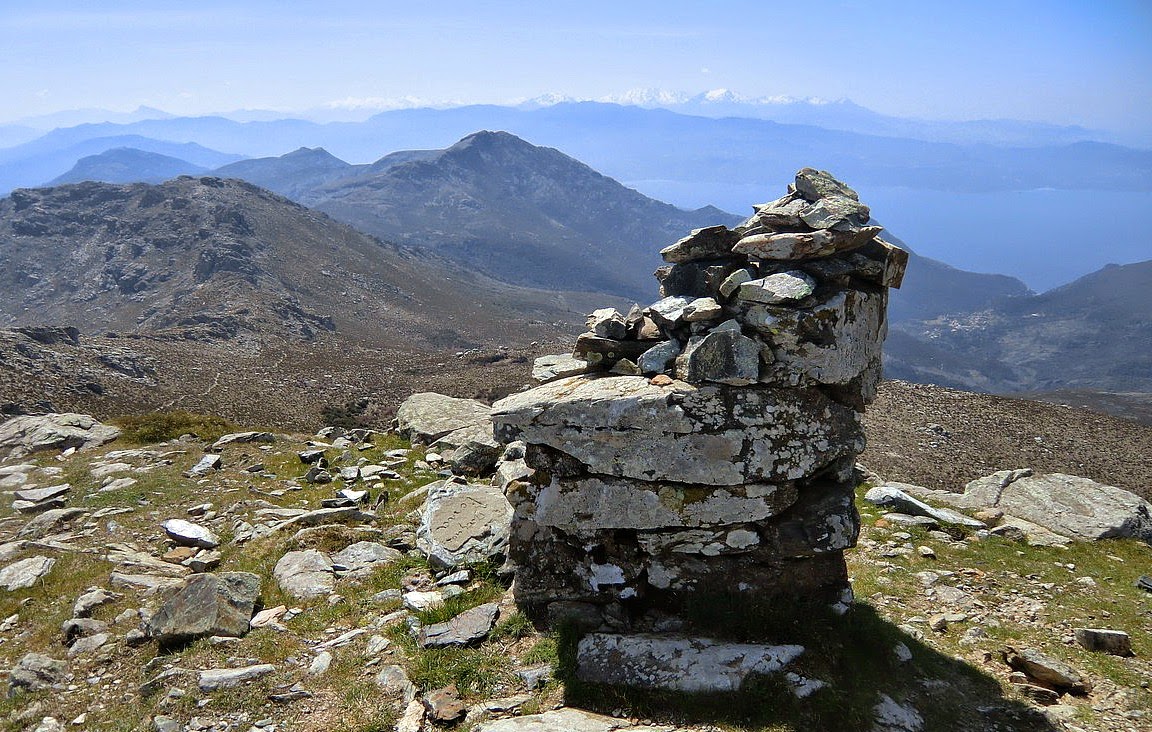Lunch at Auberge de la Madone and our Peillon classic walk
This hike from the perched village of Peillon (372 m), about 20 km north of Nice by road must have been one of the first hikes in the region that our family discovered almost 10 years ago. That is why we call it “Peillon classic”. In the Randoxygéne guide it is called Circuit de Lourquière.
Today we didn’t start the hike from La Grave-de-Peille, but made a shortened walk from Peillon around the hill called Pointe de Lourquière (678 m), because we first wanted to have lunch on the terrace of hotel-restaurant Auberge de la Madone. This family restaurant has long been known for its great cooking following local traditions, and seems to get favourable reviews on Trip Advisor. We chose formule bistro, three courses for 25 €, and were not disappointed.
The walk starts from the centre of Peillon, from the parking in front of Auberge de la Madone. Turn left after the fountain at the village entrance; ascend first along a narrow street passing the cemetery. You will soon find the signpost “
La Grave de Peille and Peille Village . The trail ascends gently in a beautiful valley. After about 30
min, a crossroads is reached. The trail north goes over a stone bridge to Peille. However our itinerary turns right ascending to a paved road and a nice residential area called plateau des Lacs (about 600 m alt.). Follow this road about 2 km south. The point where the trail forks right and leaves the road is clearly signposted. The whole trail is marked with yellow. It descends slowly to Vallon St-Martin before a final short ascent back to Peillon.
Image of the itinerary:
(Courtesy of Google Maps)
Total walking time when starting from Peillon: 2h 15 (Circuit de Lourquière about 4 h)
Ascent: 270 m (Circuit de Lourquière 460 m)


















